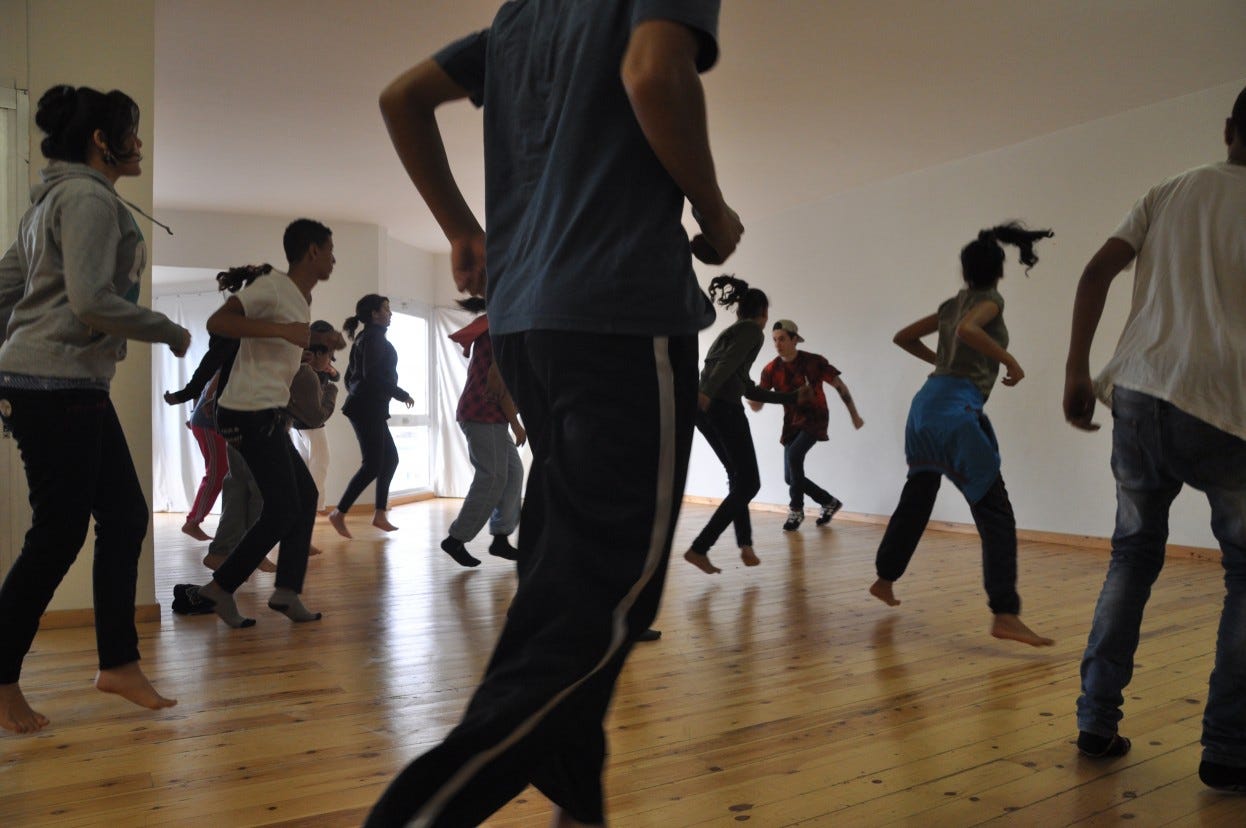Post #11
On Globalisms
As mentioned in my last post, I am continuing to reflect on the legacy of the artist Pope.L by re-publishing a few of my favorite moments from my old Art Practical column Endurance Tests. Endurance Tests was an irregular column exploring representation, the ethereal, and compulsiveness by black artists working in the field of performance. This week, I share a memorable conversation with two African choreographers — Meryem Jazouli of Morocco, and Mamela Nyamza of South Africa.1 What strikes me in this conversation from 2014 is the way we talked around and through many of the same issues that feel desperately urgent right now. How are women — especially women of the Global South — making work rooted in their material conditions? Where does the funding come from (talk to me sometime about FORCE!)? Is it possible to make work that isn’t somehow tied to our current global state of crisis? Is it possible to see work (particularly as an African woman) from any framework outside of this current state?
As we watch and read the opening hearing of South Africa’s genocide case against Israel — a case which includes specific language about Israel’s legacy of apartheid, something South Africans know intimately about — I am particularly touched by the way both artists express a concern for the particularities of place. They talk about the urgent voices of local artists, the wisdom of belonging, and what it means to be local to somewhere, even as you travel elsewhere. The trouble we know at home is never so different from the trouble we find abroad, just with site-specific contours and particularities. Shared troubles, with differences. These nuances matter, as does the knowledge we bring from where we call home.
Enjoy.
The State In Which You Find Yourself: Mamela Nyamza and Meryem Jazouli
first published in Art Practical on November 17, 2014
Mamela Nyamza: It is beautiful here [in Portland, where I sat down with both artists during Portland Institute of Contemporary Art’s TBA:14]. Yet sometimes coming to beautiful countries or states, you really always feel like the Other. Sometimes it’s hard to access work in another place because it’s so different. It’s not like you’re not used to it. Coming from South Africa, I am very used to [feeling different]—but you always have a central point of access. Sometimes in the States I struggle so much to access the work, and I have to ask myself, “Is it because I am the Other?”
Being African, there are many things that people think of us. Things people put on us without even asking us questions. Those assumptions come very strongly sometimes. [We also have assumptions] about Americans when we come to America. I’m thinking I’m going to see all these rap people running around. Then, once I get here, I have to say, “Okay, it’s actually not like that in all the cities.” So the same way you have assumptions about us, we have assumptions about you. This [compulsion to see the Other as exotic] is a give and take. For example, I see the way people comment about my hair here. [Mamela starts touching our friend Robert’s hair, inspecting it.] “Oh, I like your hairstyle.”
And I’m thinking, “Oh, God, I’m not at home.” I don’t know what it is—do I really look that African?
Anna Martine Whitehead: Do you see this affecting how audiences read your work? For example, you structured your workshop so that we got a foundation in contemporary improv before you introduced the more traditional South African dancing—instead of the other way around. You gave us the constraint of the South African footwork, but then you were telling us to take it beyond that into something more personal.
MN: Exactly. The more traditional South African dancing is also an improvisation. It has structure, but it can flow into other rhythms, other times, and other situations. I could’ve started with [South African dance] but I don’t like this perception that “I’m African so this is what I’m going to do.” It is interesting to see how [Americans] perceive the work from [Africans]. In a way this is confirming that we are so different.
Meryem Jazouli: But I think that—whether we come from Africa, Asia, Portland, or anywhere else in the world—quality is something that you can see. I remember my best experience as an audience member was in Marrakesh. Ko Muroshi [a legendary performer of Butoh] did a performance. We have a very difficult audience: They can talk and they can go out and have something to eat—
MN: Yes! They don’t care, they talk—
MJ: And nudity is [a contentious element with Moroccan audiences]. You don’t know—it can be a real mess after the show. The assistant director told Ko: “You know, Ko, you can’t be on stage with the g-string.” And he ended up coming on stage with a g-string and something transparent over it. The performance was about one hour and at the end nobody moved. I mean nobody. It was incredible. But it’s because when there is quality, you can see that.
Keep reading with a 7-day free trial
Subscribe to annatomies to keep reading this post and get 7 days of free access to the full post archives.



